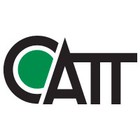In the mid-1990s, as first the Internet and then the World Wide Web swung into public view, talk of revolution filled the air. Politics, economics, the nature of the self—all seemed to teeter on the edge of transformation. The Internet was about to "flatten organizations, globalize society, decentralize control, and help harmonize people," as MIT's Nicholas Negroponte put it.
So begins the intro to the book From Counterculture to Cyberculture: Stewart Brand, the Whole Earth Network, and the Rise of Digital Utopianism, by Fred Turner. If that paragraph vibes to you more like something about the ’60s rather than the ’90s, that’s the point of the book. This story about the tech industry's progressive foundation needs to be told, especially now when many of Silicon Valley’s leaders seem to be abandoning humanism and even humanity itself.
I have wanted to tell some version of this story for a long time. I’ve followed Stuart Brand’s work since I first discovered the Whole Earth Catalog soon after I got out of high school and moved to what would become SIlicon Valley. While not a household name, Brand played a critical role at the dawn of the age of the personal computer—in fact, he invented the term “personal computer.” As you will see below, he was also a hippie hero, from riding on the bus with Ken Kesey to inspiring the first Earth Day.
As Turner’s book shows, the countercultural values born in San Francisco in the 1960s were woven into the technology-business culture that was born a few years later just down the road in Silicon Valley.
For example (please allow me a brief digression): In 2011, a couple of weeks after Steve Jobs resigned as CEO of Apple, I obtained five boxes of documents from the Apple collection at Stanford University, part of the Stanford Silicon Valley Archives. I spent two or three days a week for the following month in the elegant special-collections reading room of the Green Library, scanning internal memos, email logs, user-group newsletters, in-house ad campaigns, and hundreds of formerly Apple-eyes-only documents.
A few days after Jobs died, just a few months later, I wrote about my research in a piece for Metro Silicon Valley: “What I found looked less like a company history and more like documentation of the birth of a historic movement. In memos describing technical requirements and price-points for new products, debating design features, colors and fonts, or just plain spitballing about a piece of theoretical engineering, the Apple team's leaders come off the page like post-'60s technological philosophers—big-thinking, free-wheeling engineer-monks devoted to a radical, mind-blowing vision.”
Writing in 1978, Jef Raskin, who led the Macintosh team at Apple, wondered, “Will use of these computers as an enlightenment medium become their primary value?"
Turner’s book shows that this hippie-techie connection was not coincidental. “Between 1968 and 1972, two communities began to mingle within blocks of the Whole Earth Catalog offices in Menlo Park. One, centered around the Stanford Research Institute and composed primarily of engineers, was devoted to the ongoing pursuit of increased human-computer integration. The other, clustered around the Catalog and the countercultural communities it served, focused on the pursuit of individual and collective transformation.
“Stewart Brand positioned himself between these worlds and, in a variety of ways, brokered their encounter.”
As we spend this time together, here in our online virtual community, celebrating Earth Day, let’s tip our collective hat to a man who literally created the first online virtual community. And helped bring about the first Earth Day.











